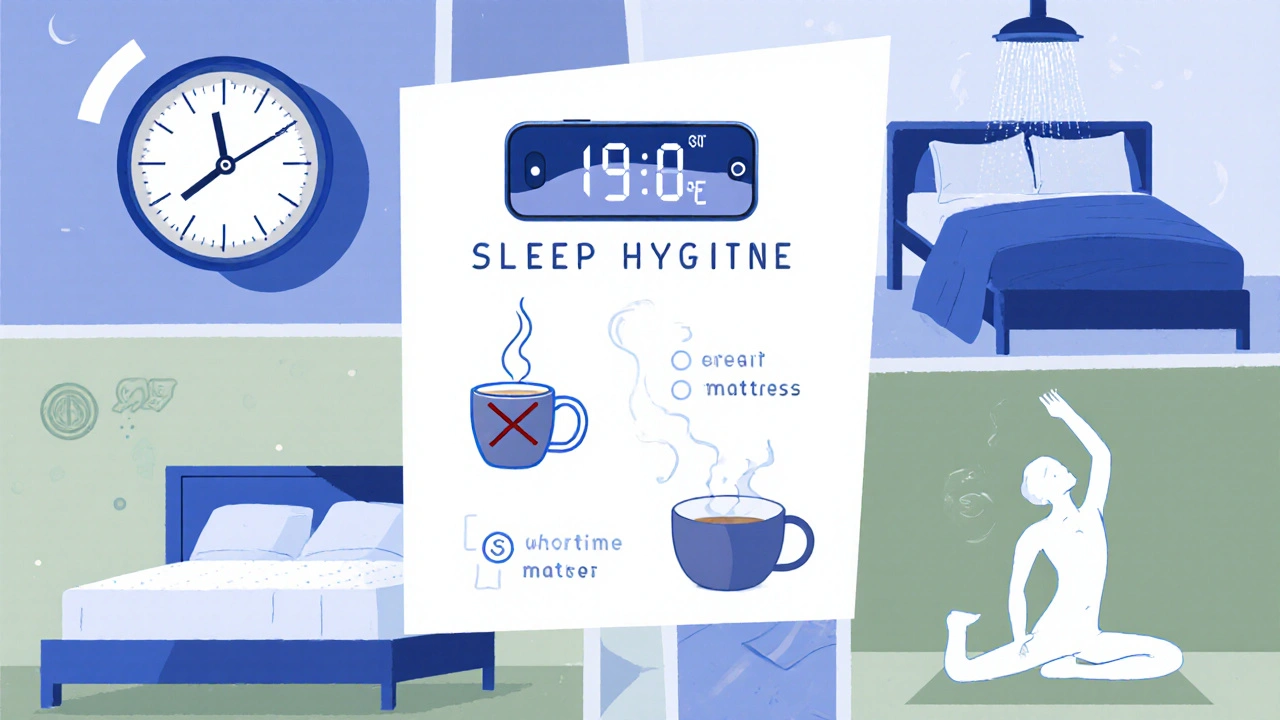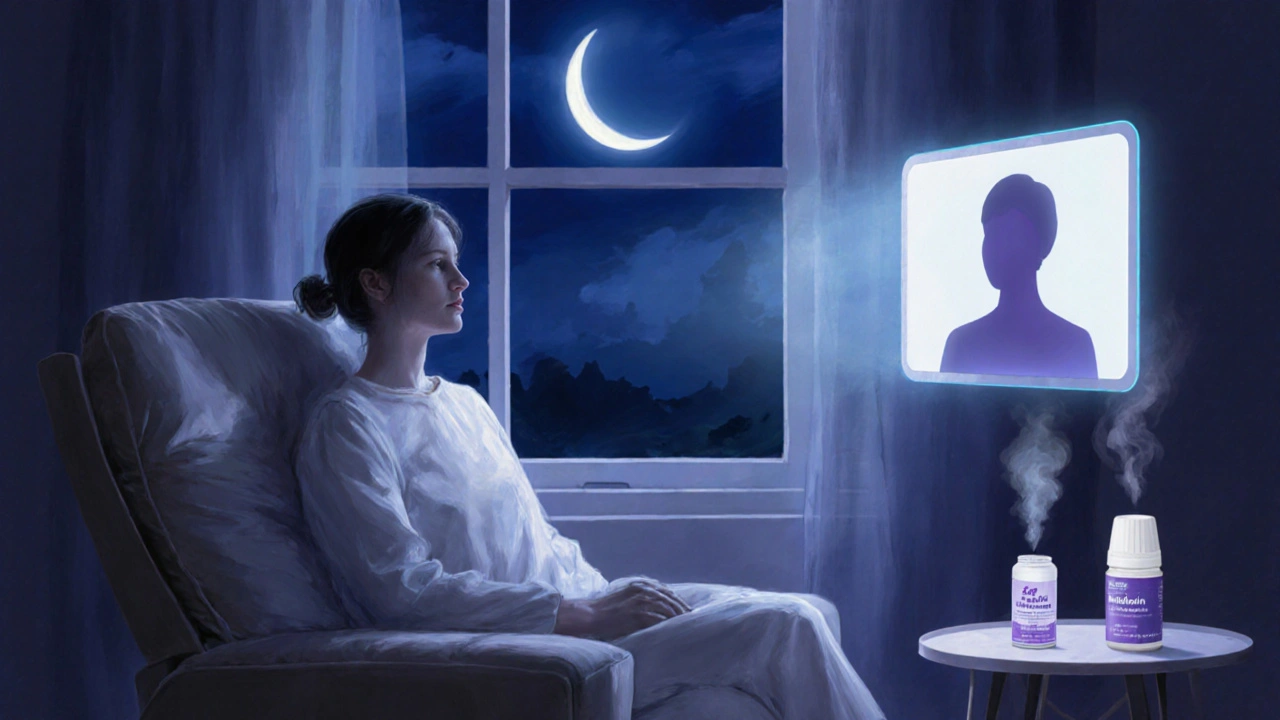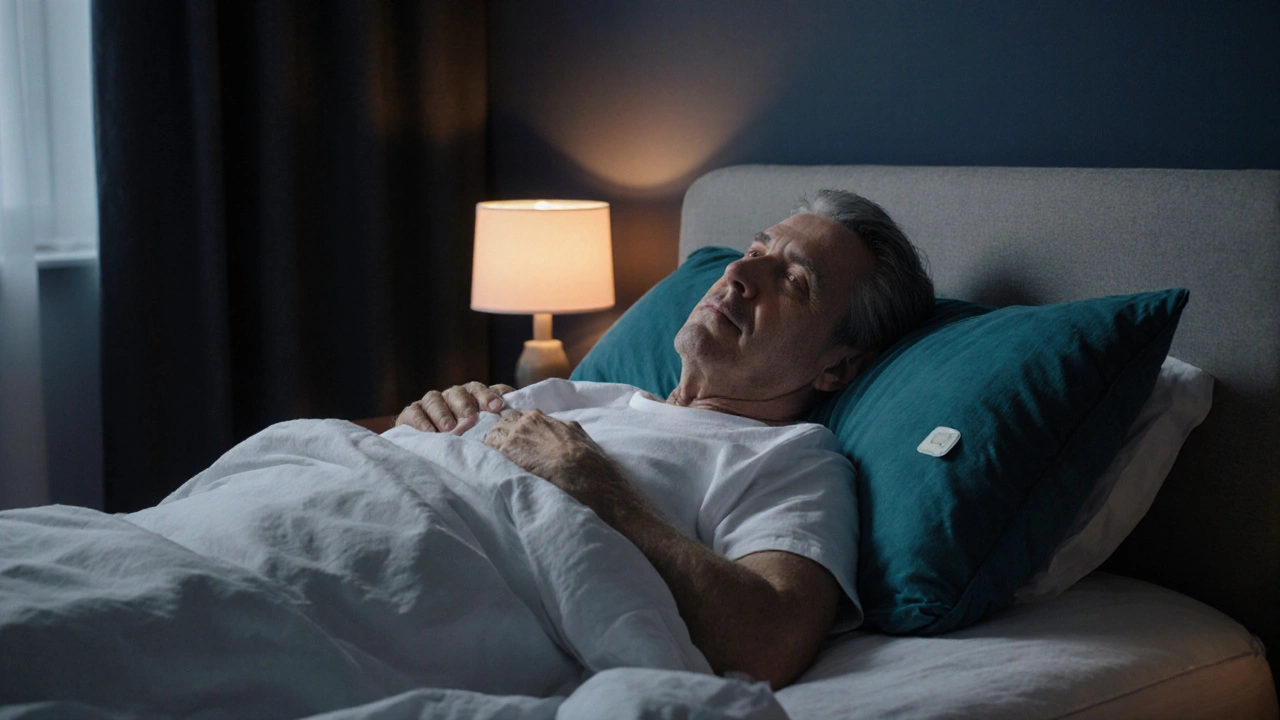Sleep Improvement Checklist for Multiple Myeloma Patients
Select the challenges you're experiencing:
Complete these foundational practices:
Use these methods to manage specific issues:
Consider these options when lifestyle changes aren't enough:
Living with Multiple Myeloma is a daily balancing act, and getting solid sleep often feels like chasing a moving target. Yet quality rest isn’t a luxury-it’s a cornerstone of pain control, immune resilience, and emotional steadiness. Below you’ll find practical, evidence‑backed steps to turn those restless nights into a genuine source of recovery.
Why Sleep Matters When You Have Multiple Myeloma
Sleep is the body’s nightly maintenance crew. During deep stages, growth hormone spikes, inflammation drops, and the brain clears out toxic waste. For someone fighting Multiple Myeloma, these processes translate into slower disease progression, fewer infection bouts, and a clearer mind for treatment decisions.
Clinical observations from Australian haematology centres in 2023 show that patients reporting fewer than five hours of sleep per night have a 30% higher risk of hospitalisation due to treatment‑related complications. In short, better sleep equals better odds of staying on your treatment schedule and maintaining daily independence.
Common Sleep Disruptors in Multiple Myeloma
Understanding the culprits is the first step to beating them.
- Pain and bone lesions - Myeloma often weakens bones, causing night‑time aches that flare up when you lie still.
- Steroid therapy - Drugs like dexamethasone boost energy levels, making it hard to wind down.
- Chemotherapy‑induced nausea - Some regimens upset the stomach, prompting bathroom trips.
- Anxiety - Uncertainty about disease trajectory can keep the mind racing.
- Night sweats - Hormonal shifts and fever spikes interrupt sleep cycles.
- Insomnia - The umbrella term for difficulty falling or staying asleep, often a secondary effect of the above stressors.
Each of these factors can be tackled individually; the combined approach yields the best results.

Daily Habits That Set the Stage for Rest
Think of sleep hygiene as the foundation for any specialized treatment you’ll apply later.
- Consistent schedule - Go to bed and rise at the same time, even on weekends. A regular cue trains the circadian rhythm.
- Limit blue light after 7p.m. - Switch smartphones, tablets, and TVs to night mode or use amber glasses.
- Cool, dark bedroom - Aim for 18‑20°C and block external light with blackout curtains.
- Comfortable mattress and pillow - For bone‑pain patients, a medium‑firm mattress reduces pressure points.
- Avoid heavy meals & caffeine after 5p.m. - Digestive effort can trigger reflux, waking you up.
- Gentle evening routine - Warm shower, light stretching, or a short meditation signals the body it’s time to unwind.
Sticking to these habits for at least two weeks often yields noticeable improvements, even before you adjust medication timing.
Managing Pain and Night‑Time Symptoms
Targeted symptom control is essential because pain spikes are the most common reason patients wake up.
- Timed analgesics - Take short‑acting opioids or NSAIDs about 30minutes before bed if your doctor approves. Long‑acting formulations can be scheduled for the morning to avoid nighttime sedation.
- Topical options - Creams containing lidocaine or capsaicin can numb local bone pain without systemic side effects.
- Heat therapy - A warm compress on sore areas for 10minutes can relax muscles and reduce perceived pain.
- Scheduled bathroom trips - Reduce fluid intake after dinner and keep a bedside commode if nocturnal urination is an issue.
Always discuss any medication changes with your haematology team to avoid interactions with chemotherapy or steroids.

Choosing the Right Sleep Aid
When lifestyle tweaks aren’t enough, a targeted sleep aid may be the missing piece. Below is a quick comparison of three common options.
| Option | Onset (minutes) | Typical Side Effects | Best For |
|---|---|---|---|
| Melatonin (3‑5mg) | 30‑45 | Day‑time drowsiness, mild headache | Patients with mild insomnia, low drug interaction risk |
| Prescription hypnotic (e.g., zolpidem) | 15‑30 | Memory lapses, next‑day grogginess, dependency risk | Severe insomnia when other measures fail |
| CBT‑I (Cognitive‑Behavioral Therapy for Insomnia) | Variable (weeks for full effect) | None (behavioral) | Long‑term solution, especially for anxiety‑related sleep loss |
Most Australian specialists start with Melatonin because it aligns with the body’s natural hormone and rarely interferes with chemotherapy. If melatonin isn’t enough, a short prescription can bridge the gap, but only under close monitoring. CBT‑I is the gold‑standard for sustainable improvement and can be accessed via tele‑health services in Melbourne.
Quick‑Reference Checklist
- Set a consistent bedtime and wake‑time.
- Dim lights and shut screens an hour before sleep.
- Keep the bedroom cool, dark, and quiet.
- Take prescribed pain meds 30 minutes before bed if approved.
- Try 3‑5mg melatonin 30 minutes before lights‑out.
- Practice a 5‑minute breathing exercise to calm anxiety.
- Limit fluids after dinner; use a bedside commode if needed.
- Schedule a tele‑health CBT‑I session if insomnia persists.
Mark each item as you go. Even a few small wins add up to a night of deeper, less interrupted sleep.
Frequently Asked Questions
Can steroids really keep me awake?
Yes. Steroids like dexamethasone boost cortisol levels, which can mimic a ‘fight‑or‑flight’ state. If you’re on a nightly dose, ask your oncologist about shifting it to earlier in the day or tapering the amount.
Is melatonin safe with my chemotherapy?
Studies from the National Cancer Institute (2022) show melatonin does not interfere with common myeloma drugs and may even improve quality‑of‑life scores. Still, stick to low doses (3‑5mg) and confirm with your treatment team.
What if I wake up multiple times a night?
First, note the cause-pain, bathroom trips, or night sweats. If pain, use a short‑acting analgesic before bed. For bathroom needs, limit evening fluids and keep a night‑light to reduce stress. If none of these help, a short course of melatonin or a prescription sleep aid may be warranted.
Can CBT‑I replace medication?
For many patients, CBT‑I becomes the primary tool after the first few weeks, reducing the need for hypnotics. It targets the thoughts and habits that keep the brain alert, so it works well for anxiety‑driven insomnia common in multiple myeloma.
How long does it take to see improvement?
Lifestyle changes often show benefits within 7‑10days. Medication adjustments may work faster (30‑45minutes for melatonin). CBT‑I typically needs 4‑6weeks for full effect, but patients notice reduced racing thoughts within a week.


Aminat OT
i cant even think about bedtime when the pain is screaming at 3am lol.